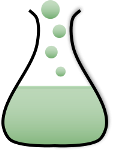Views: 37 Author: Site Editor Publish Time: 2020-06-04 Origin: Site









A chemical reaction is a process where a set of substances undergo a chemical change to form a different substance.
Where do chemical reactions occur?
You may think that chemical reactions only happen in science labs, but they are actually happening all the time in the everyday world. Every time you eat, your body uses chemical reactions to break down your food into energy. Other examples include metal rusting, wood burning, batteries producing electricity, and photosynthesis in plants.
What are reagents, reactants, and products?
Reactants and reagents are the substances that are used to bring about the chemical reaction. A reactant is any substance that is consumed or used up during the reaction.
The substance that is produced by a chemical reaction is called the product.
Reaction Rate
Not all chemical reactions occur at the same rate. Some happen very quickly like explosions, while others can take a long time, like metal rusting. The speed that the reactants turn into products is called the reaction rate.
The reaction rate can be changed by adding energy such as heat, sunlight, or electricity. Adding energy to a reaction can increase the reaction rate significantly. Also, increasing the concentration or pressure of the reactants can speed up the reaction rate.
Types of Reactions
There are many types of chemical reactions. Here are a few examples:
Synthesis reaction - A synthesis reaction is one where two substances combine to make a new substance. It can be shown in an equation such that A + B --> AB.

Decomposition reaction - A decomposition reaction is where a complex substance breaks down to form two separate substances. It can be shown in an equation such that AB --> A+ B.

Combustion - A combustion reaction occurs when oxygen combines with another compound to form water and carbon dioxide. Combustion reactions produce energy in the form of heat.
Single displacement - A single displacement reaction is also called a substitute reaction. You can think of it as a reaction where one compound takes a substance from another compound. Its equation is A + BC --> AC + B.
Double displacement - A double displacement reaction is also called a metathesis reaction. You can think of it as two compounds trading substances. Its equation is AB + CD --> AD + CB.
Photochemical reaction - A photochemical reaction is one involving photons from light. Photosynthesis is an example of this kind of chemical reaction.
Catalyst and Inhibitors
Sometimes a third substance is used in a chemical reaction to speed up or slow down the reaction. A catalyst helps to speed up the rate of reaction. Unlike other reagents in the reaction, a catalyst is not consumed by the reaction. An inhibitor is used to slow down the reaction.
Interesting Facts about Chemical Reactions
When ice melts it undergoes a physical change from solid to liquid. However, this is not a chemical reaction as it remains the same physical substance (H2O).
Mixtures and solutions are different from chemical reactions as the molecules of the substances stay the same.
Most cars get their power from an engine that uses a combustion chemical reaction.
Rockets are propelled by the reaction that occurs when liquid hydrogen and liquid oxygen are combined.
When one reaction causes a sequence of reactions to occur this is sometimes called a chain reaction.